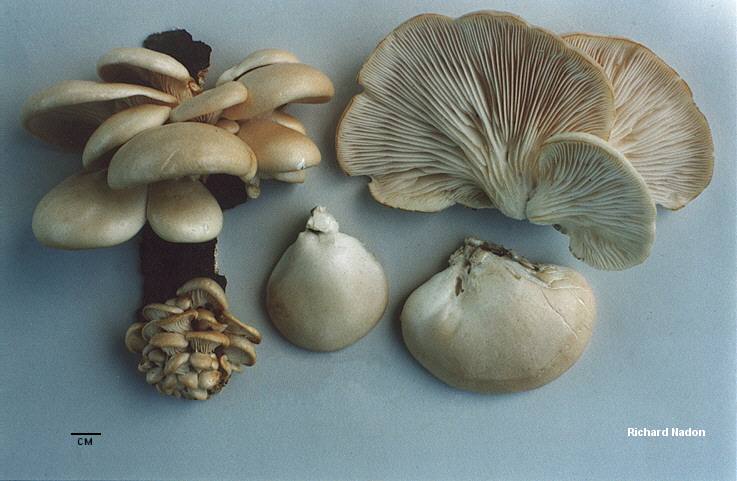Exercise 5.1: Pencil: Pleurotus ostreatus
Exercise 5.1: Pencil Illustration: Pleurotus ostreatus. For this lesson we will focus on illustrating this specific type of fungus.
There are well over 100,000 types of fungi known, and no doubt many more exist, but have yet to be discovered or classified. An easy way to classify types of fungus would be to say they are either mushrooms, yeasts, or mold, which would take care of many, though not necessarily all the different types. A few general characteristics of fungi are as follows:
- Eukaryotic
- Non-vascular organisms
- Reproduce by means of spores, usually wind-disseminated
- Both sexual (meiotic) and asexual (mitotic) spores may be produced, depending on the species and conditions
- Typically not motile, although a few have motile phase
- Like plants, fungi have an alternation of generations.
- Many fungi are harmful to human interests and to always be safe when handling specimens.
This exercise we will be illustrating the oyster mushroom. Pleurotus ostreatus, is a common edible mushroom. Depending on your location, you may locate it at your local food market, so you can have a live study for this exercise. If it is unavailable, you may reference the images below, or locate a similar mushroom at the grocer.
Again, doing research on your subject is good practice before starting your pencil illustration. Give yourself as much time as needed to complete the illustration. Follow the guidelines of technique and composition as given in previous assignments. Make sure to show each main characteristic of the oyster mushroom.
An excellent resource on illustrating fungi is Drawing and Painting Fungi, by Claire Kathleen Ward (2024).
After completion, sign and date your work. Scan and submit for grading. Below is a description and photos of our study to help you with your illustration. If needed, use the internet to find further details on the study.
"The mushroom has a broad, fan or oyster-shaped cap spanning 5–25 cm; natural specimens range from white to gray or tan to dark-brown; the margin is inrolled when young, and is smooth and often somewhat lobed or wavy. The flesh is white, firm, and varies in thickness due to stipe arrangement. The gills of the mushroom are white to cream, and descend on the stalk if present. If so, the stipe is off-center with a lateral attachment to wood. The spore print of the mushroom is white to lilac-gray, and best viewed on dark background. The mushroom's stipe is often absent. When present, it is short and thick. No poisonous lookalikes grow in North America, however Omphalotus nidiformis is a toxic lookalike found in Australia and Japan." [Eger, G., Eden, G. & Wissig,E. (1976).Pleurotus ostreatus — breeding potential of a new cultivated mushroom. Theoretical and Applied Genetics 47: 155-163; Trudell, S.; Ammirati, J. (2009). Mushrooms of the Pacific Northwest. Timber Press Field Guides. Portland, Oregon: Timber Press. p. 134. ISBN 0-88192-935-2.]

